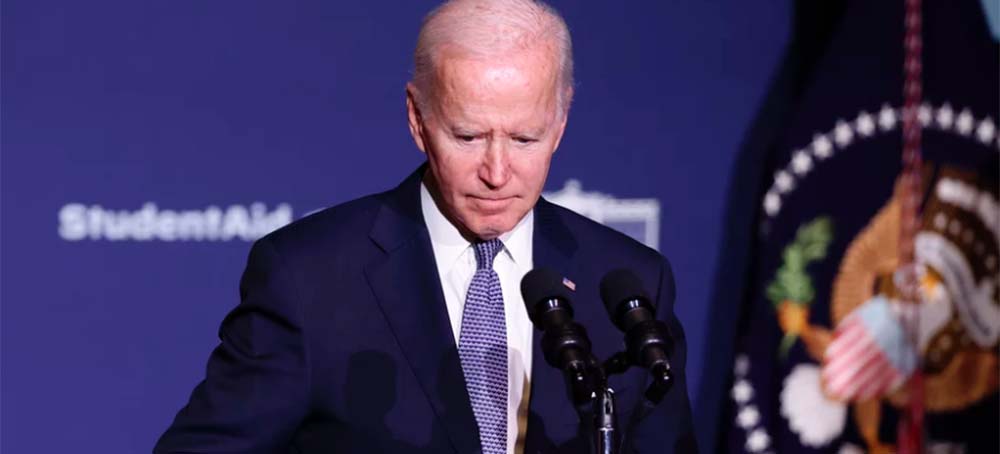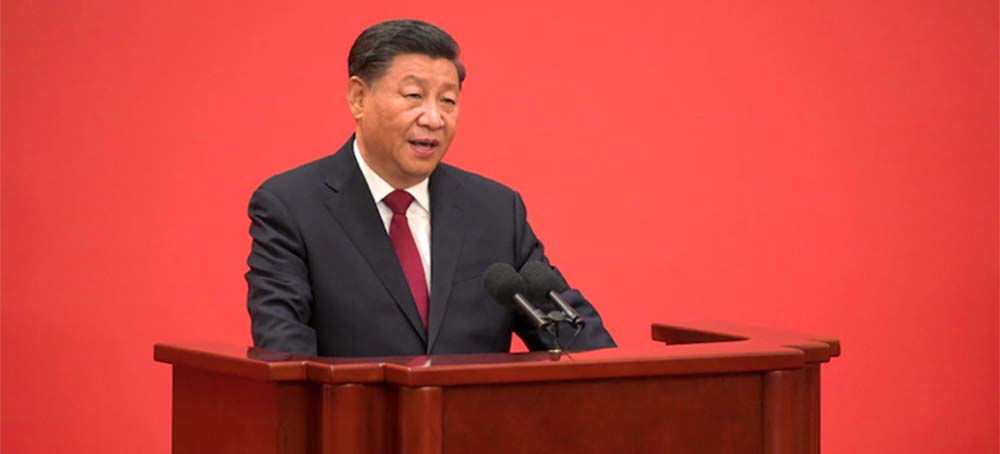Live on the homepage now!
Reader Supported News
Despite its nonpartisan claims, One More Mission is funded by a group led by some of the most prominent pro-Trump election deniers in the country.
Dubbed “One More Mission,” the group bills itself as a nonpartisan effort to recruit military veterans, as well as police officers and other emergency workers, to monitor polls in an effort to “defend our Constitutional right to vote.”
“Our team wanted to find an apolitical solution, a business solution, if you will,” a man in one recruitment video says.
One More Mission’s promotional materials argue that police and veterans are the most trusted figures in the United States and that they should therefore be used to certify to the public that elections are legitimate. In a late September press release announcing its launch, the group claimed to be a politically independent solution to fears of voter fraud.
“This is just an opportunity for those guys to continue the mission in protecting the integrity of our Constitution,” Travis Wilson, a former Green Beret turned supplement company owner who also works with One More Mission, told The Daily Beast.
In an interview with The Daily Beast, a spokeswoman for One More Mission initially said she wasn’t sure who funded the organization. In reality, despite its claims to be nonpartisan, One More Mission is funded by another group led by some of the most prominent pro-Trump election deniers in the country. In a single sentence on its website, One More Mission reveals that it’s funded by the America Project, a group of people convinced the 2020 election was stolen that is led by Flynn, his brother Joseph, and millionaire former Overstock.com CEO Patrick Byrne.
READ MORE Civilians leaving Kherson arrive by ferry in Oleshky, Ukraine. (photo: Alexander Ermochenko/Reuters)
Civilians leaving Kherson arrive by ferry in Oleshky, Ukraine. (photo: Alexander Ermochenko/Reuters)
Move comes ahead of expected advance by Ukrainian troops to recapture the city
In a post on the Telegram messaging service, the regional pro-Kremlin administration called on civilians to use boat crossings over a major river to move deeper into Russian-held territory, citing a tense situation on the front and the threat of shelling and alleged “terror attacks” by Kyiv.
Kherson has been in Russian hands since the early days of the invasion in February. The city is the capital of a region of the same name, one of four that Russian president Vladimir Putin illegally annexed last month and then put under Russian martial law.
On Friday, Ukrainian forces bombarded Russian positions across the province, inching closer to a full assault on its capital as they targeted pro-Kremlin forces’ resupply routes across the Dnieper River.
Russian-installed officials were reported desperately trying to turn the city of Kherson – a prime objective for both sides because of its key industries, and major river and seaport – into a fortress while attempting to relocate tens of thousands of residents.
The Kremlin poured as many as 2,000 draftees into the surrounding region to replenish losses and strengthen frontline units, according to the Ukrainian army’s general staff.
The Dnieper River figures prominently in the regional battle because it serves critical functions – crossings for supplies, troops and civilians; drinking water for southern Ukraine and the annexed Crimean peninsula; and power generation from a hydroelectric station. Much of the area, including the power station and a canal feeding water to Crimea, is under Russian control.
Kherson’s Kremlin-backed authorities previously announced plans to evacuate all Russian-appointed officials and as many as 60,000 civilians across the river, in what local leader Volodymyr Saldo said would be an “organised, gradual displacement”.
Another Russian-installed official on Saturday estimated that about 25,000 people from across the region had made their way over the Dnieper. In a Telegram post, Kirill Stremousov claimed that civilians were relocating willingly.
“People are actively moving because, today, the priority is life. We do not drag anyone anywhere,” he said, in an apparent response to Ukrainian and western concerns about potential forced transfers by Moscow.
Ukrainian officials have urged locals to resist attempts to relocate them, with one local official alleging that Moscow wanted to take civilians hostage and use them as human shields.
Elsewhere, hundreds of thousands of people in central and western Ukraine woke up on Saturday to power outages and periodic bursts of gunfire, as Ukrainian air defence tried to shoot down drones and incoming missiles.
Russia has intensified its strikes on power stations, water supply systems and other key infrastructure across the country, the latest phase of the war as it nears the eight-month mark.
Ukraine’s air force said in a statement on Saturday that Russia had launched “a massive missile attack” targeting “critical infrastructure,” adding that it had shot down 18 out of 33 cruise missiles launched from the air and sea.
Air raid sirens blared across Ukraine twice by early afternoon, sending residents scurrying into shelters. “Several rockets” targeting the capital were shot down on Saturday morning, Kyiv mayor Vitali Klitschko said on the Telegram messaging service.
Similar reports were made by the governors of six western and central provinces, as well as the southern Odesa region on the Black Sea. The presidential office said in its morning statement that five explosive-laden drones were downed in the central Cherkasy region south-east of Kyiv.
Ukraine’s top diplomat said on Saturday that the day’s attacks were proof that Ukraine needed new western-reinforced air defence systems “without a minute of delay”.
Kyrylo Tymoshenko, the deputy head of Ukraine’s presidential office, said on Telegram on Saturday that almost 1.4m households had lost power as a result of the strikes. He said 672,000 homes in the western Khmelnytskyi region were affected, while a further 242,000 suffered outages in the central Cherkasy province.
Most of the western city of Khmelnytskyi, which straddles the Bug River and was home to about 275,000 people before the war, was left with no electricity, shortly after local media reported several loud explosions. The city council urged locals to store water, “in case it’s also gone within an hour,” in a social media post on Saturday.
The mayor of Lutsk, a city of 215,000 in Ukraine’s far west, made a similar appeal on Telegram on Saturday. Power in Lutsk had been partially knocked out after Russian missiles slammed into local energy facilities, Ihor Polishchuk said. He later added that a civilian had suffered burns as a shock wave from the strike hit his house, and that one power station had been damaged beyond repair.
 President Biden speaks about student debt relief at Delaware State University in Dover on Friday. (photo: Anna Moneymaker/Getty Images)
President Biden speaks about student debt relief at Delaware State University in Dover on Friday. (photo: Anna Moneymaker/Getty Images)
ALSO SEE: Appeals Court Temporarily Halts
Biden's Student Debt Relief Program
The Friday evening ruling comes less than a week since the application portal went live. Already, nearly 22 million people — more than half of qualifying borrowers — have signed up. The administration could have begun processing applications and changing loan balances beginning Sunday.
"The order does not reverse the trial court's dismissal of the case, or suggest that the case has merit," White House press secretary Karine Jean-Pierre said in a statement Friday evening. "It merely prevents debt from being discharged until the court makes a decision."
The block was issued by the U.S. Eighth Circuit Court of Appeals, which is considering a motion from six Republican-led states to stop the program. It's one of several lawsuits that have aimed to challenge the program.
Earlier this week, Supreme Court Justice Amy Coney Barrett rejected similar efforts from a Wisconsin taxpayer group.
What happened in the court case?
Six states — Arkansas, Missouri, Nebraska, Iowa, Kansas and South Carolina — filed a lawsuit arguing that the federal relief program would hurt state-based loan companies that manage some federal loans themselves.
Earlier this week, a federal judge dismissed the case, saying it had no standing. The group then appealed and asked a federal appeals court to place a temporary hold on the program while the appeals court reviews the case.
For those who haven't yet applied, what should they do now?
The application on studentaid.gov remains open. Jean-Pierre said the temporary order does not prevent borrowers from applying for relief and she encouraged eligible borrowers to do so if they haven't already.
What is going to happen to people who've already applied for debt cancellation?
According to Jean-Pierre, the court decision does not stop the federal government from reviewing applications nor preparing documents for loan servicers.
"We are moving full speed ahead to be ready to deliver relief to borrowers," Education Secretary Miguel Cardona said.
"Today's temporary decision does not stop the Biden Administration's efforts to provide borrowers the opportunity to apply for debt relief nor does it prevent us from reviewing the millions of applications we have received," he said.
How long will the court block last?
One of two things can happen in the upcoming days: either the court can issue an injunction and the pause will last longer or it can dismiss the case and the program can carry on.
The federal appeals court is expected to announce a ruling as soon as early next week.
 Eric Andre. (photo: Matt Winkelmeyer/Getty Images)
Eric Andre. (photo: Matt Winkelmeyer/Getty Images)
They didn’t have any reason to stop me (a fact they have admitted). It’s just part of Flying While Black.
Shortly after I entered the jet bridge, two police officers stepped in front of me, blocking my path. They started rapid-fire questioning: Was I carrying any illegal drugs? Cocaine? Meth? Pills? Why was I traveling? Could they see my ID?
I didn’t see any other Black people boarding at that time.
The officers were part of a local Clayton County Police drug interdiction task force, whose job it is to lurk at the end of jet bridges and accost unsuspecting passengers. Police call these passenger encounters “consensual.” That’s based on the fiction that passengers have the power to ignore the officers and their questions, even though officers have chosen the exact place and time—passing through the narrow jet bridge—when passengers will feel least free to ignore them.
We all learn that airport security is important and we should obey officers. They never inform passengers they have a right to simply ignore them, and it is hard to imagine people choosing to do so. And then there is the fact that people of color are drilled repeatedly about the dangers of ignoring police “requests.”
 Chinese President Xi Jinping, having just received a historic third term as the nation's paramount leader, speaks in the Great Hall of the People in Beijing on Sunday. (photo: Wang Zhao/AFP/Getty Images)
Chinese President Xi Jinping, having just received a historic third term as the nation's paramount leader, speaks in the Great Hall of the People in Beijing on Sunday. (photo: Wang Zhao/AFP/Getty Images)
And with that one short, stiff walk and a quick wave, Xi was anointed Sunday as China’s uncontested leader for five, if not many more years, as he concentrates power to a degree not seen since the days of Mao Zedong and Deng Xiaoping, and positions his country defiantly against the West.
At a party plenum on Sunday that followed the close of the twice-a-decade Communist Party congress, Xi secured a third term as general secretary and head of the Central Military Commission, the party’s two most important positions. The men at his side, all allies, make up the newly chosen members of the seven-member standing committee, the party’s apex of power. Xi is at the top.
It marks the pinnacle of a decade of consolidating power and a new chapter of uncertainty for the ruling Communist Party as Xi upsets norms decades in the making.
The Chinese people, led by the party, have put in “sweat and toil” to “open a Chinese path to modernization,” Xi said in a speech Sunday. “The enormity of the task is what makes it great and infinitely glorious,” he said.
By not stepping down after two terms, Xi has defied unspoken rules that previous leaders instated in hopes of institutionalizing peaceful transitions of power and preventing a return to Mao-style one-man rule. The 69-year-old Xi — who in 2018 abolished presidential term limits, a sign that he would not follow the unspoken principle — has not designated a potential successor.
“There is no bottom line. All the rules have been broken,” said Cai Xia, a former professor at the Central Party School who was expelled from the party in 2020 for criticizing Xi. “Before there was still resistance, but this time you can see that the future of China’s is entirely driven by his will.”
When Xi came to power in 2012, he was seen as a low-key pragmatist that some hoped would be a reformer in the vein of Mikhail Gorbachev or at least of his own father, a revolutionary leader who helped implement economic liberalization under Deng Xiaoping.
But he moved decisively in the other direction. He called Gorbachev a coward and ordered cadres to study the fall of the Soviet Union. The party expanded the surveillance state and oversaw a campaign of mass detention in Xinjiang that the United Nations said may constitute crimes against humanity. Authorities cracked down on Chinese civil society while lawmakers imposed a draconian national security in Hong Kong to stop anti-Beijing protests.
He declared a “no limits” partnership with Russian president Vladimir Putin just before the Kremlin invaded Ukraine in February. Under a banner of nationalism promoted by Xi, an army of “wolf warriors” appears increasingly willing to flout diplomatic norms to appear more patriotic at home.
As paramount leader who demands absolute loyalty, Xi also undermined a system of collective rule as well as power sharing among factions within the party — a system honed since the 1980s to ward off personality cults.
“He will have his third term as a very strong leader. He consolidated power and placed his own people in the standing committee,” said Yang Zhang, assistant professor at the School of International Service at American University.
By stacking the standing committee, Xi is undoing an age norm held since the 1990s. Then-party leader Jiang Zemin used an informal cutoff of 68 to force out older leaders and promote replacements. For the next three decades, that trigger drove turnover at the top of the party. No more.
Two 67-year-old standing committee members retired, including former premier Li Keqiang, a one-time contender for the top party job and a protege of Xi’s predecessor Hu Jintao. (Hu himself was unceremoniously escorted offstage in the middle of congress’s final session Saturday. State media said he was feeling unwell.)
Some observers expected Xi would give at least one slot on the standing committee to a politician from outside his clique in a nod to power sharing.
But on Sunday, all additional slots were filled exclusively with Xi’s men and the premiership is expected to go to Li Qiang, former Shanghai party chief and a close ally of Xi. Hu Chunhua, once an up-and-comer talked about as potentially next-in-line for the top job, did not even make the 24-member Politburo.
Li Qiang oversaw a disastrous two-month lockdown of Shanghai that left residents without enough food or supplies and inspired a wave of public anger over the government’s insistence on a “zero covid” policy. Still, the measures were praised by the central leadership.
“Xi is also sending a signal that if you want to get promoted, it’s not about popularity among the people. It’s about loyalty to me,” Zhang, the academic, said of Li Qiang’s appointment.
Xi is expected to ramp up his ambitions in his third term, focusing especially on national security, upgrading the country’s technology sector and challenging an international order dominated by the United States.
It won’t be easy. He must navigate a slowdown in the Chinese economy, rising unemployment and a worsening property market — all exacerbated by sudden lockdowns and persistent outbreaks of the Omicron variant to which swaths of public are especially vulnerable.
China’s relationship with the United States is set to grow more combative. With the departure from top leadership of economic czar Liu He and the former party secretary of Guangdong province, Wang Yang — who were seen as helping smooth relations with the United States — Xi will likely adopt a more hardline approach toward Washington.
The party must be committed to “self-revolution” in order to become “all-conquering,” Xi said on Sunday. During his speech at the opening of last week’s congress, Xi warned that the party must gird itself against efforts to “blackmail” his country.
China also is expected to turn increasingly inward as Beijing renegotiates its relationship with the West.
“Xi Jinping has emphatically set the Chinese economy on a path toward realizing his vision of a state-dominated and self-reliant economy that will continue engaging with the rest of the world but entirely on its own terms,” said Eswar Prasad, a professor of economics at Cornell University.
Yet Xi will encounter risks in his third term, from divisions within his own coterie of allies to the dangers of over-centralized power.
“When all the power is one person’s hands, all of the responsibility must be borne by that person,” said Cai, the former professor. “If he make disastrous mistakes, it is not just 1.4 billion people bearing the consequences of this disaster. This person himself will also have to pay a price.”
READ MORE Jim Marchant, the GOP nominee for secretary of state in Nevada, speaks with people at a political event on July 16 in Pahrump, Nev. (photo: John Locher/AP)
Jim Marchant, the GOP nominee for secretary of state in Nevada, speaks with people at a political event on July 16 in Pahrump, Nev. (photo: John Locher/AP)
The election supervisors in 10 of the state’s 17 counties have already quit, been forced out or announced their departures. Lower-level election workers have quit in the face of consistent abuse. The state’s elections staff has lost eight of its 12 employees.
The (Republican) secretary of state, who vigorously defends the integrity of the 2020 election, is term-limited, and the GOP nominee to replace her, Jim Marchant, leads a national group of election deniers running for office. Marchant is on record saying that if he and his fellow candidates are elected, “we’re going to fix the whole country, and President Trump is going to be president again.”
In Reno’s Washoe County, the state’s second largest, an antisemitic conspiracy theorist led a harassment campaign against the registrar of voters, accusing her of treason and addiction, and she quit in fear for her family’s safety. In her absence, the county recently mailed a sample ballot to voters laced with errors: a missing contest, a missing candidate, a contest that didn’t belong on the ballot and a misspelling.
In Storey County, the clerk resigned earlier this year and was replaced by Jim Hindle, vice chairman of the Nevada GOP and one of the fake electors put forth as part of the attempt to overturn the results of the 2020 election.
Officials expect the eventual losers of several contests, perhaps a dozen, to contest the results, and they are bracing for the possibility that conspiracy-minded county commissioners might refuse to certify the results, as several threatened in 2020. This raises the likelihood that the state legislature could step in and throw out the results in any contested state election, from Assembly up to governor, and install the candidate of their choice — something that is allowed under Nevada law.
A few Nevada counties, meanwhile, are in the process of sabotaging their vote-counting procedures. After Marchant traveled the state making presentations with false allegations of voting machine fraud, at least four counties have taken steps toward abandoning voting machines and running elections by paper ballot and hand counting — a process certain to delay results and introduce more errors.
The furthest along in this return to the 19th century is Nye County, a rural stretch of desert where Donald Trump won 69 percent of the vote in 2020. After Marchant urged the county commission to “dispose of your electronic voting and tabulation machines,” it moved toward doing just that. The longtime county clerk, a Republican, resigned in frustration, and the commission appointed as clerk Mark Kampf, who has touted various election conspiracies and is now seeking election on the same ballot he is administering.
His attempt to shift to paper balloting with both a hand count and machine count is in chaos. He recently submitted to the state a draft 18-page election plan that he is still revising even as early voting begins Saturday. Ginny Okawa, a Nye County volunteer poll worker who runs the local chapter of the progressive group Indivisible, told me she is expecting “a circus” when voting starts because of insufficient training and personnel.
Kampf didn’t reply to email or phone inquiries, so I staked out his office in Pahrump, down the street from Second Amendment Guns & Range. When he emerged, he gave me the name of his lawyer (who also didn’t answer my email), and he said from behind a plexiglass partition: “I can’t talk to you.”
Kampf did acknowledge to me that he’s “working on making some modifications to our draft procedure” and that there are “a lot of things that have got to get prepared.” But he assured me, appearances to the contrary, that “I have no intention of being secretive” and “I want to be transparent.”
Marchant also didn’t respond to my inquiries.
Hannah Fried, who runs the voting rights group All Voting Is Local, sees what’s happening in Nevada as part of a proliferation nationwide of “efforts to create chaos in our election system in service of undermining election results.”
Georgia has had mass challenges to voter registrations, Florida has a new police force that has engaged in voter intimidation, Michigan is battling rogue election workers, and many states have experienced harassment of elections officials, restrictions on voting drop boxes, and more. “It’s death by a thousand cuts,” Fried said. The push for paper balloting, because it will extend the vote-counting time and thereby potentially undermine confidence in the process, “is a tinderbox.”
Nye County, with its 53,000 residents, is no stranger to conspiracy theories. It’s home to the Nevada National Security Site, which includes Area 51, of space alien fame. The Area 51 Alien Center in Amargosa offers alien dolls and T-shirts, an alien autopsy ice freezer and alien fortuneteller. A flatbed trailer on Pahrump’s main drag, across from Phantom Fireworks, displays 10 extraterrestrials in green, silver and black, some pointing upward.
In that conspiratorial tradition, Marchant brought “experts” to Nye in March to warn that their Dominion voting machines were “insecurable” and “uncertifiable.” He cited nefarious “forces” that are trying to “hide” something. Though lacking evidence of fraud, he argued that nobody could prove the negative — that the machines “haven’t been altered or manipulated.”
At the same meeting, Sandra “Sam” Merlino, who had been Nye County clerk for two decades, assured the county commission that “there are a lot of checks and balances in place” and that “the machine counts have never been off in the many recounts I’ve done” by hand. But the county commission voted to move toward tossing the machines, and Merlino announced her retirement.
The commission appointed Kampf. Now he’s scrambling to concoct labyrinthine hand-counting procedures: “For the races with a mismatch in vote totals, the Vote Tallier completes the header for the Recount tally sheet and records the vote for each race on the Batch Tally Sheet using hash marks in batches of five,” goes a typical line from his draft procedures. “When all three Vote Talliers match, all three Vote Talliers will sign all three Batch Tally Sheets (and if applicable the Recount Tally Sheets).”
The American Civil Liberties Union has sued Nye County, which has been making constant election revisions to avoid running afoul of state laws. It will allow those with disabilities to use voting machines; it will run a machine tabulation in addition to its hand count; it will give voters various methods to fix mismatched signatures; it will make talliers swear not to release early vote counts before Election Day.
Even so, the still-evolving procedures, poor training for poll workers and errors inherent in hand counting could combine for chaos — and resulting doubts about the validity of the outcome.
One thing you can be sure of: People will cry “fraud” either way. “We’re still dealing with human nature,” said Bill Carns, the county GOP chairman.
We are. And Nevada might be set to bring out the worst of it.
READ MORE Alaska canceled the snow crab harvest this year. (image: Slate/Getty Images)
Alaska canceled the snow crab harvest this year. (image: Slate/Getty Images)
According to an annual survey of the Bering Sea floor carried out by the National Oceanic and Atmospheric Administration, estimates for the crustaceans' total numbers fell to about 1.9 billion in 2022, down from 11.7 billion in 2018, or a reduction of about 84 percent.
For the first time ever, the Alaska Department of Fish and Game announced the Bering Sea snow crab season will remain closed for 2022-23, saying in a statement efforts must turn to "conservation and rebuilding given the condition of the stock." The state's fisheries produce 60% of the nation's seafood.
The species is also found in the more northward Chukchi and Beaufort Seas, but they do not grow to fishable sizes there.
Erin Fedewa, a marine biologist with the Alaska Fisheries Science Center, told AFP the shocking numbers seen today are the result of heatwaves in 2018 and 2019.
The "cold water habitat that they need was virtually absent, which suggests that temperature is really the key culprit in this population decline," she said.
According to the National Oceanic and Atmospheric Administration, Alaska is the fastest warming state in the country, and is losing billions of tons of ice each year — critical for crabs that need cold water to survive.
"Environmental conditions are changing rapidly," Ben Daly, a researcher with ADF&G, told CBS News. "We've seen warm conditions in the Bering Sea the last couple of years, and we're seeing a response in a cold adapted species, so it's pretty obvious this is connected. It is a canary in a coal mine for other species that need cold water."
Historically an abundant resource in the Bering Sea, their loss is considered a bellwether of ecological disruption.
There are thought to be several ways that warmer temperatures have depleted the species.
Studies have pointed toward a higher prevalence of Bitter Crab Disease as the temperature heats up.
The crustaceans, named for their love of cold water, are also under greater metabolic stress in warmer waters, meaning they need more energy to stay alive.
"A working hypothesis right now is that the crabs starved, they couldn't keep up with metabolic demands," said Fedewa.
Young snow crabs in particular need low temperatures to hide out from their major predator, Pacific cod, and temperatures in regions where juveniles typically reside jumped from 1.5 degrees Celsius in 2017 to 3.5 Celsius in 2018 (35 degrees Fahrenheit to 38 degrees Fahrenheit) — with studies indicating 3C might be an important threshold.
More research is underway and findings should be published soon, but in the meantime, "everything really points to climate change," Fedewa said.
"These are truly unprecedented and troubling times for Alaska's iconic crab fisheries and for the hard-working fishermen and communities that depend on them," Jamie Goen, executive director of Alaska Bering Sea Crabbers said in a statement, lamenting that second and third generation crab-fishing families "will go out of business."
The industry was also hit by the cancellation of Bristol Bay red king crab fishing for the second year in a row.
Fedewa also noted that overfishing isn't a big factor in the population collapse of snow crabs.
Fishing removes only large adult males, she said, "and we've seen these declines across all sizes of snow crab, which really suggest some bottom-up environmental driver is at play."
Male Alaska snow crabs can reach six inches (15 centimeters) in shell width, but females seldom grow larger than three inches, according to NOAA.
In some good news, this year's survey saw significant increases in the immature crabs compared to last year — but it will take four or five years before the males among them grow to fishable size.
Following the heatwave years, temperatures have returned to normal, and "the hope is that leaving crabs untouched will allow them to reproduce, there'll be no mortalities, and we can just let the stock try to recover," said Fedewa.
Gabriel Prout, whose Kodiak Island fishing business relies heavily on the snow crab population, told CBS News that there needs to be a relief program for fisherman, similar to programs for farmers who experience crop failure, or communities affected by hurricanes or flooding.
When asked what fishermen can do in this situation, with their livelihoods dependent on the ocean, Prout responded, "Hope and pray. I guess that's the best way to say it."
Follow us on facebook and twitter!
PO Box 2043 / Citrus Heights, CA 95611


No comments:
Post a Comment
Note: Only a member of this blog may post a comment.